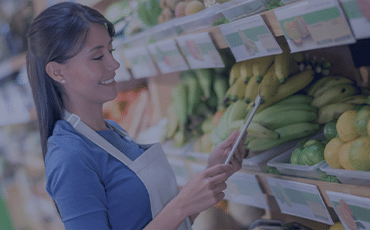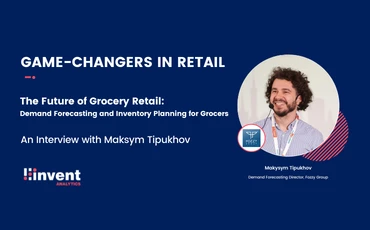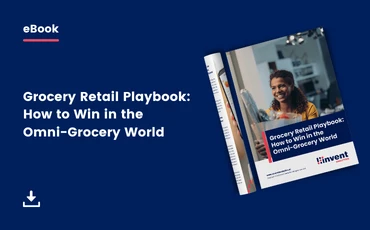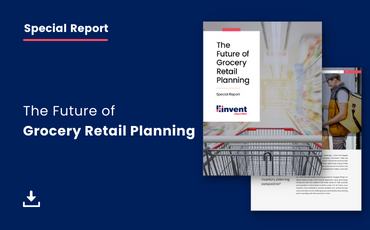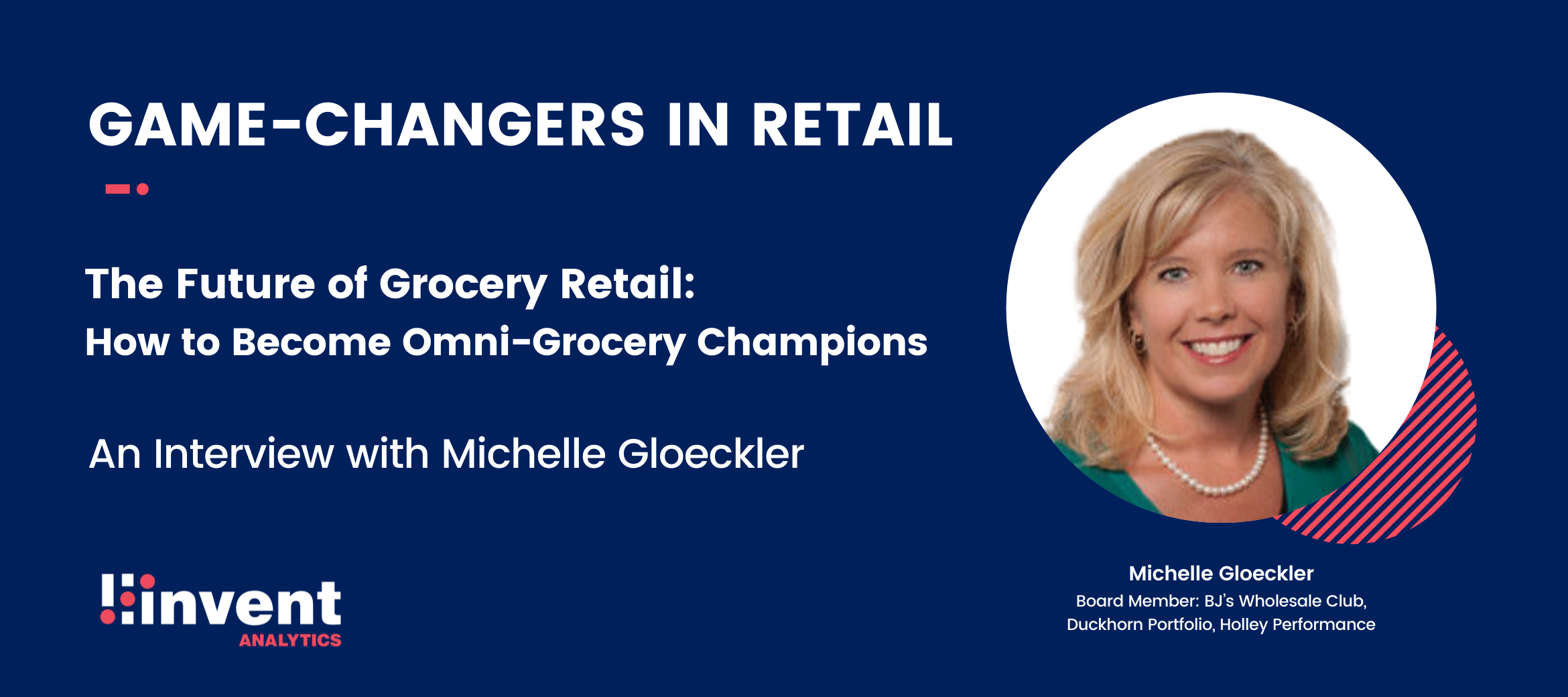
The Future of Grocery Retail: How to Become Omni-Channel Grocery Champions
Game-changers in Retail: An Interview with Michelle Gloeckler, Board Member: BJ’s Wholesale Club, Duckhorn Portfolio, Holley Performance
Times are changing. Today, serving the omni-channel customer in the best way possible requires grocery retailers to look at everything through an omni-channel lens, increase their data and analytics capabilities, and re-engineer their supply chain. In this interview, Michelle Gloeckler, Board Member & Advisor tells us how grocers can be Omni-Retail Champions and shares her perspective on the future of grocery retail.
What do you think consumers expect from omni-channel grocers? What should grocery retailers do so well to meet the expectations and win in an increasingly competitive space?
I think consumers’ needs and habits are constantly changing. They expect frictionless shopping experiences that integrate into their daily routines. They demand the flexibility to buy and fulfill where, when, and how they choose, and this creates complexity for retailers.
When it comes to meeting the changing consumer expectations, it is all about being agile and responsive. Retailers who can create enough flexibility in their systems and inventories to offer effortless, frictionless shopping experiences gain a competitive advantage.
What do you consider the biggest challenges for grocery retailers today from an inventory planning perspective?
Aside from today’s supply chain challenges, I think the biggest challenge for retailers is rapidly changing consumers. There are generational shopping differences both in assortment and how they shop. Today, consumers have so many options like buying online, picking up in-store. They are often less loyal, and we know that it only takes one unsatisfactory shopping experience to make a consumer stop shopping at a retailer.
So, I think this new reality is forcing grocers to navigate things. It’s about having a new omni-channel approach, using technology, having the tools and systems that make sense for their business and operations. And inventory is at the center of it all. Today many inventory tools available to grocery retailers and sorting through what works best can be challenging. But, nevertheless, every starting point must begin with the consumer in mind.
How important do you think it is today to focus on omni-channel customers’ fulfillment expectations and respond to fast-evolving buying patterns?
I believe retailers need to please their most valuable, loyal customers first. Yes, all customers are important but, there is certainly a lifetime value of a customer who is a grocer’s most loyal customers.
And today’s fulfilment expectations are very interesting. Consumers are getting smarter. They have realistic expectations, and they know when, where and how they get the best service. Retailers need to fulfill their consumers’ expectations by leveraging technology, taking advantage of inventory planning tools to provide in-stock. Accurate demand forecasting can also be really helpful.
I also think that substitution logic is very important for retailers. Whether it is the shopper who wants to make a change in the order or the grocer who wants to offer substitutions in case of an out-of-stock.
Think of a busy mother who needs to get some food for her 2-year-old, for example. She does her grocery shopping online and having it delivered because she wants to save time. If the grocery store doesn’t have the specific item she wanted and if that means she needs to stop by at another store, that means losing a lot of time. Emotionally this experience leaves a very negative view of that grocer that disappointed her. So, I think it’s important for retailers to understand the customer’s emotions.
Today online platforms and apps can deliver orders in an hour or even less. What do you think this means for physical stores in the near future?
It depends on each situation. Every consumer will enjoy the opportunity to do shopping however they want at that time. Covid-19 accelerated e-commerce adoption and more people are doing their grocery shopping online today. But some people who still want to have an in-store experience. Some things are unique to an in-person experience, such as touching or physically examining an item.
I also think the innovation in delivery apps is fascinating, and it’s changing the workforce as well. You can already see it in the physical stores where there are more self-checkout areas, areas for the drivers for pick up and there is also curbside. This shows us that the grocery world has definitely changed.

How do you see the role of dark stores or micro-fulfillment centers in grocers’ fulfillment strategies?
I think it depends on the grocery store’s footprint as well as supply chain efficiency. It depends on how many stores a grocer has, what their supply chain and fulfillment are like. So, for example, if a grocer has a huge saturation of stores, it is easier to pick the items from those stores than setting up a dark store.
On the other hand, I am sure we all had the experience with the carts in the stores where store employees are picking multiple orders, and it looks like a fulfillment center. Many times, customers in the store get frustrated with that. So, from that customer perspective, I like the idea of the dark store. It may not just be as financially possible for everybody, especially if they already have a large footprint of stores. In that case, it makes more sense for them to fulfill from the stores instead of duplicating the inventory in a dark store.
If the store density isn’t very strong, I think a dark store can be a good mechanism to fulfill specific geography. Today, grocery retailers doing delivery know where their deliveries are. If 60% of their deliveries are within 3 zip codes and if their closest store is 20 miles away, setting up a dark store can make a lot of sense in there.
What do you think are the 3 key things grocers need to do to optimize their supply chain capabilities to differentiate themselves from their competitors and meet their financial goals?
1. Know your customer. Grocers need to know their most valuable, loyal customers.
2. Win with the assortment to meet the needs of most loyal customers. When we’re talking about optimizing the supply chain in today’s environment, assortment plays a big role. Grocers need to have the assortment that pleases their customers.
3. Leverage technology to differentiate your service levels. Grocers need to take advantage of omni-channel inventory planning solutions to differentiate their service levels from the competitors.

How important do you think it is to make granular, data-driven forecasts in the omni-channel grocery era?
Data-driven forecasts give retailers a competitive advantage. However, grocers need to expand the time of their forecasts to make more accurate forecasts and meet customer expectations. Today grocers need to take into account the competitive activity, promotions, local events, all of those different things. And I think local events are an amazing thing if the forecasting tools can account for differences regionally. The more inputs grocers have, the better and robust the forecasts will be.
What do you think is the most effective way for grocery retailers to improve availability?
I think grocers need to manage assortment differently for in-store vs. online. High turn, perishable items maybe things that are important for people to touch and feel, and these should be in store, for example. There can be a broader assortment on online channels. Also a good demand planning and forecasting, powerful inventory management systems can be very helpful in improving the availability. This should be the starting point.
But as a stopgap, we talked about substitution logic. As a consumer, if a grocery store is out of the item I wanted, I’d prefer them not just telling me they’re out of it. I’d rather expect them to make some effort, take a step toward me and say, “I’m sorry, we are out of it, but we’ll give you this one at the same price.”. I’m good with that, because it shows that they care, and they don’t make me go to some other store. Substitution logic is hard, and it builds over time, but it can be very powerful.
What do you see as the best way for grocers to reduce lost sales and increase customer lifetime value in such a competitive environment?
I’d say excellent substitution logic and excellent customer communication skills. Building a good customer relationship is critical in this new omni-channel retail era. I also think the method of communication is very important, and it does help with reducing lost sales and increasing lifetime value.
What do you think will be key trends shaping the grocery industry in the coming years?
How we grocery shop and what we grocery shop for has changed, and I think the pace of change will continue. We’ll see modern, healthier food. We’ll witness growth in fresh food and in pick up. Consumers are getting more thoughtful about healthier eating, especially younger consumers. There was a phase where consumers went through: ‘All I want is convenience in my food’ which led to a lot of highly processed food. Now I think they want convenience in how they shop, not in what they are eating.
What do you think should be the top 3 inventory planning strategies for grocery retailers who want to become the omni-channel grocery champions of tomorrow?
1. Align metrics with company strategy and goals.
Grocery retailers need to align their metrics with their strategy and goals. For so many retailers, inventory goals are based on historical processes. They measure in stock, inventory turn, inventory dollars -just very traditional retail inventory measurements. I think they should start over and ask the question of ‘What are our company’s financial goals?’. And then, they need to align their, inventory, in-stock, profits, sales and customer satisfaction to their business strategy.
In the past, there was a warehouse and a store. Now there is a warehouse and a store that is a warehouse, if you’re doing fulfillment from there. There are also online orders carrying incredible consumer data. In the past, no such data was available. A grocer might have thought they lost a sale, but it was more of a guessing game.
Today when a customer places an online order, they get a recap of the items they’ll get or the substitution items. And retailers have access to this very valuable information too. They can see what their consumers are looking for, what they are purchasing, the out-of-stocks etc. This is a whole stream of data and analytics, and retailers can use it for better inventory planning and more valuable experiences for their shoppers.
2. Leverage technology.
Traditional metrics like in-stock, inventory turn, inventory dollars can no longer produce the desired financial or customer retention results. Today, grocers need to leverage the technology and tools to do robust demand forecasting, better inventory positioning, and better fulfillment.
3. Simplify and remove tension in the supply chain.
Lastly, to meet these goals, I would say retailers need to simplify and remove tension. And I think it is a very different way of thinking about inventory, replenishment and forecasting.
Finally, how do you think Invent Analytics can help grocery-retailers to win in the new omni-channel world?
Consumers have power; they have choice…in both the WHAT they shop for and the HOW they shop for it. Add to that they WHERE they buy and it gets complex quickly. While consumers have habits, they don’t conform to a predictable behavior all the time. Given that, the use of AI to build as much pattern-based learning to assist in driving the business is necessary. Invent Analytics has been modernizing allocation, inventory and forecasting through AI for years and now has tools to help in the omni-world…because we’re not going back! Consumers are in charge and have the power.
Thank you Michelle.

